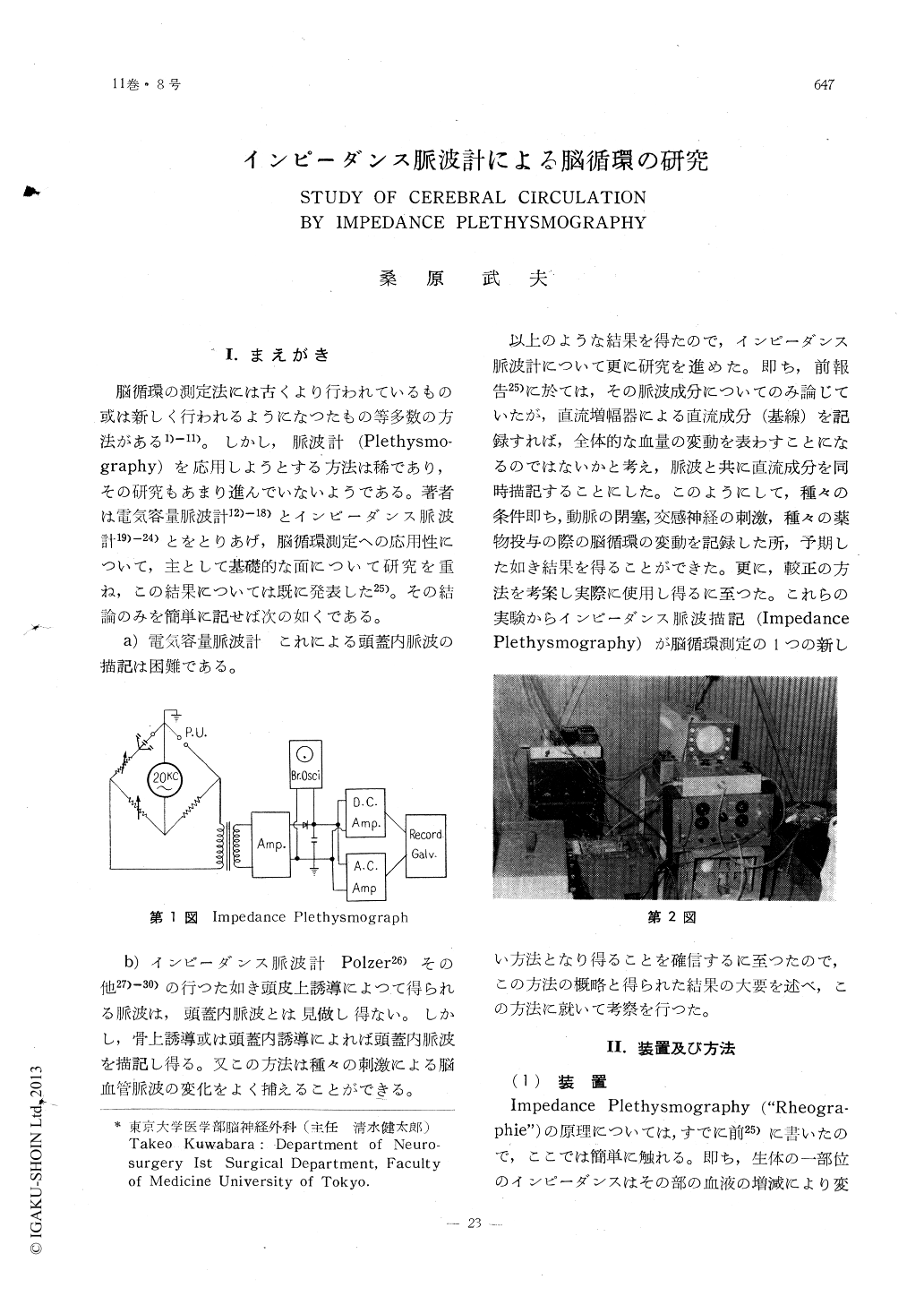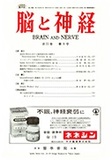Japanese
English
- 有料閲覧
- Abstract 文献概要
- 1ページ目 Look Inside
I.まえがき
脳循環の測定法には古くより行われているもの或は新しく行われるようになつたもの等多数の方法がある1)−11)。しかし,脈波計(Plethysmo-graphy)を応用しようとする方法は稀であり,その研究もあまり進んでいないようである。著者は電気容量脈波計12)−18)とインピーダンス脈波計19)−24)とをとりあげ,脳循環測定への応用性について,主として基礎的な面について研究を重ね,この結果については既に発表した25)。その結論のみを簡単に記せば次の如くである。
a)電気容量脈波計 これによる頭蓋内脈波の描記は困難である。
The author, previously, reported on the applicability of impedance plethysmography to record the intra-cranial pulse wave. And now, further investigations have established a method to measure the cerebral blood flow by means of impedance plethysmography.
In this report, the method and various records of the cerebral blood flow are outlined, and has come to a conclusion that this is one of the useful methods for the study of cerebral circulation.
METHOD
Impedance plethysmography is based upon the principle that changes in the blood volume in a given segment reflect as changes of impe-dance in the same portion. Thus by using two A. C. & D. C. Amplifiers, which are placed parallely, we could obtain a simultaneous recording of each pulse wave and the D. C. element (base line), change of which indicate a change of intra-cranial blood volume. And the displacement of this D. C. element can be written in quantity by Ohm's unit, using a calibration device.
RESULTS
(1) Occlusion of vessels
When both carotid or/and both vertebral arteries were occluded, marked down-ward shift of the base line and the decrease in the amplitude of pulse waves were recorded.

Copyright © 1959, Igaku-Shoin Ltd. All rights reserved.


